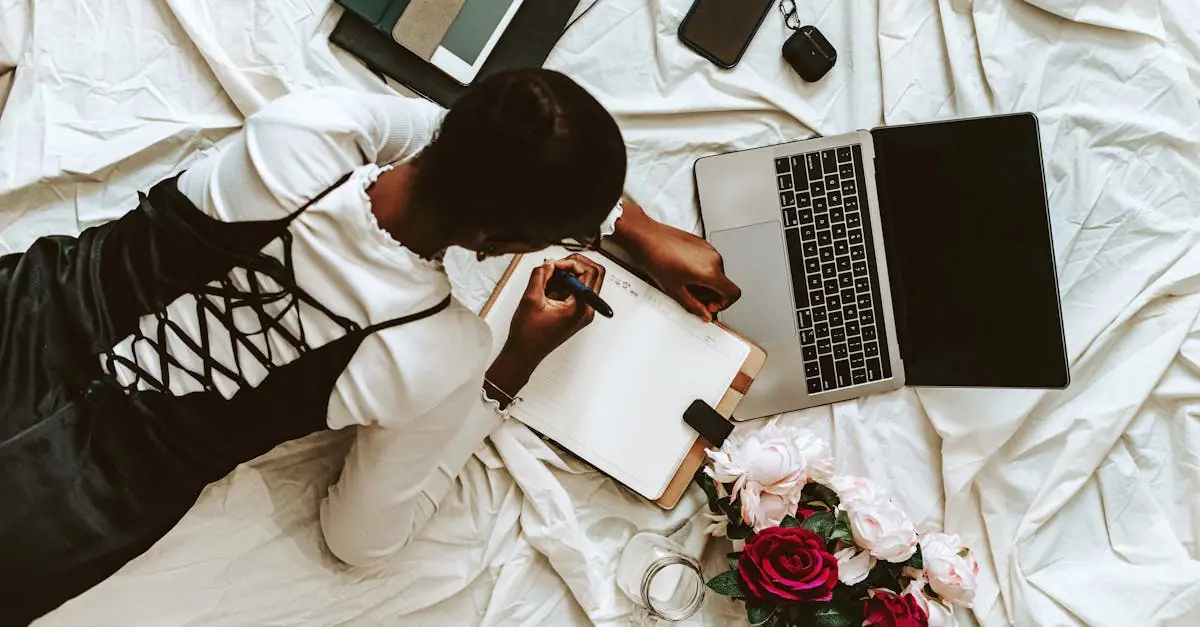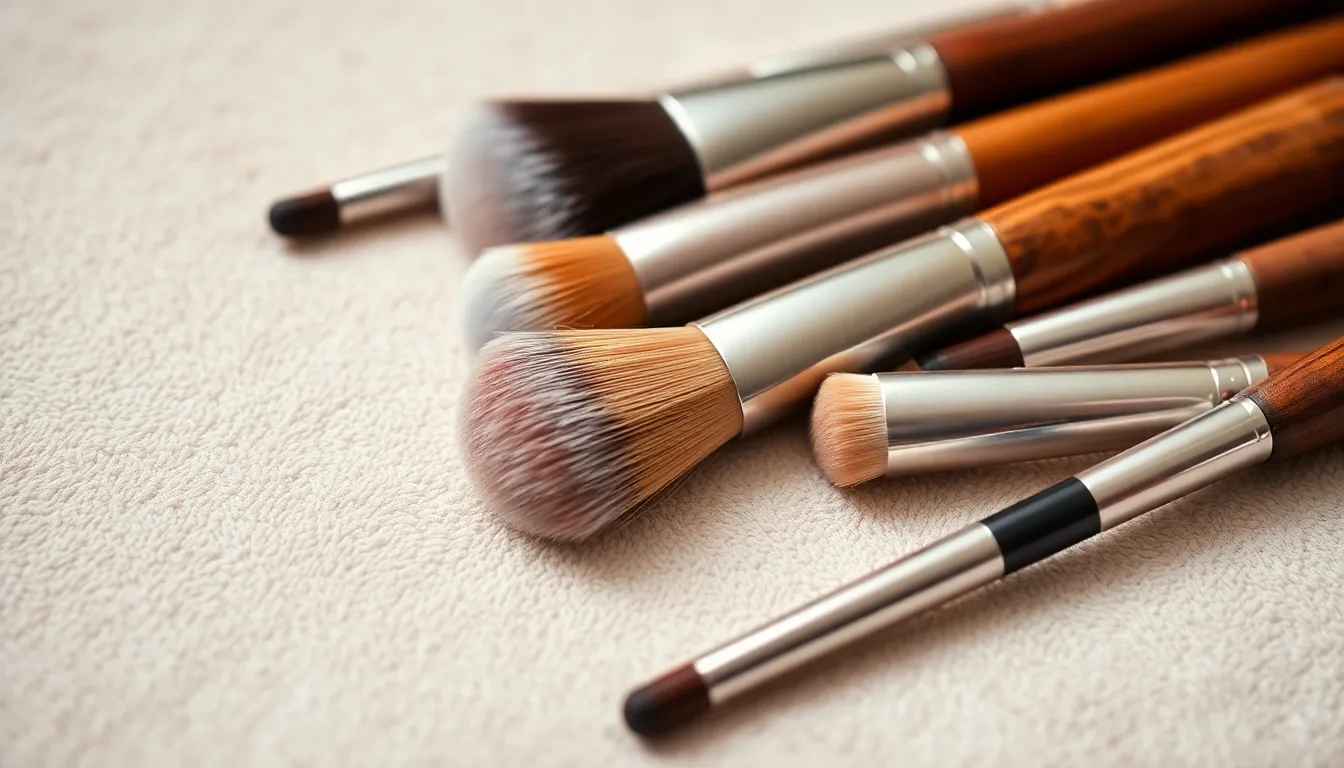Imagine this: you’re juggling your iPhone and iPad like a circus performer, trying to keep everything in sync. It’s a tech-savvy world, and you want your devices to play nice together. Pairing your iPad with your iPhone isn’t just a tech trick; it’s the key to seamless productivity and entertainment.
Table of Contents
ToggleUnderstanding the Benefits of Pairing iPad with iPhone
Pairing an iPad with an iPhone enhances productivity significantly. Users can easily access apps and documents across both devices. Notifications sync seamlessly, ensuring users stay informed without checking multiple devices.
Collaboration improves through features like Handoff and AirDrop. Handoff allows users to start a task on one device and switch to another without interruption. AirDrop facilitates quick sharing of photos, videos, and files between devices, saving time and effort.
Backup becomes more efficient as well. iCloud integration automatically keeps data backed up and accessible on both devices. This reliability minimizes the risk of data loss and enhances accessibility.
Entertainment experiences also elevate when both devices work together. Users can stream content on an iPad while controlling it with an iPhone. This capability creates a more immersive and enjoyable viewing experience.
Continuity features integrate daily tasks with ease. Receiving a call on the iPhone allows users to answer directly from the iPad, breaking the barriers between devices. Syncing calendars and reminders across devices prevents missed appointments and tasks.
Using both devices fosters a cohesive ecosystem tailored to individual needs. Different apps work better on one device than the other, giving users flexibility in how they work or play. Overall, pairing an iPad with an iPhone creates a streamlined and user-friendly experience that enhances both productivity and entertainment.
Preparing Your Devices
Before pairing an iPad with an iPhone, users must ensure their devices comply with compatibility standards and have the latest software updates.
Checking Compatibility
Confirm each device operates on at least iOS 13 or later. This version supports features that enhance synchronization between the iPad and iPhone. Different generations of devices might have varying capabilities; thus, checking model numbers can help assess if both are compatible. Users can find this information in the Settings app under General and About. Ensuring proper connectivity options, such as Wi-Fi or Bluetooth, also aids seamless pairing.
Updating Software
Updating the software on both devices is crucial. Navigating to Settings, users then select General and tap on Software Update, checking for any available updates. Running the latest versions ensures access to all features, including improved performance and security enhancements. Frequent updates also enable compatibility with new apps and services. While this process typically takes just a few minutes, ensuring both devices are charged can prevent interruptions during updates.
How to Pair iPad with iPhone
Pairing an iPad with an iPhone allows seamless synchronization of apps, notifications, and data. Below are methods to connect these devices efficiently.
Using Bluetooth
Bluetooth provides a convenient way to establish a connection. First, enable Bluetooth on both devices through the Settings app. Once activated, the iPad will display the iPhone in the list of available devices. Tapping the iPhone’s name initiates the pairing process. A confirmation code appears for verification. Enter the code when prompted to complete the pairing. After successful connection, users can share files and access features like Handoff between the two devices.
Using Wi-Fi
Wi-Fi offers an alternative for pairing the iPad and iPhone. Start by ensuring both devices are connected to the same Wi-Fi network. Open Settings on each device, then select your network under Wi-Fi settings. Once connected, transfer files and sync data seamlessly through iCloud. Utilizing this method enhances productivity further, as features like AirDrop become accessible, allowing for quick sharing between the iPhone and iPad.
Managing Your Pairing Settings
Managing pairing settings ensures both devices operate smoothly together. Users can optimize their experience through syncing data and adjusting notifications.
Syncing Data
Syncing data between an iPad and an iPhone maintains consistency across both devices. iCloud serves as a central hub for storing photos, documents, and app data. Users must enable iCloud on both devices; this ensures automatic synchronization. Accessing settings for iCloud is straightforward. Users should navigate to Settings, tap on their name, then select iCloud to manage options. Contact information, calendars, reminders, and notes can sync seamlessly. Each of these settings helps create a cohesive workflow, reducing the chances of data discrepancies. Additionally, users can switch on features like Messages in iCloud for instant access to texts on both devices.
Adjusting Notifications
Adjusting notifications allows users to streamline alerts, reducing distractions. Notifications can be customized on both devices for different apps. Users should access the Notifications section within Settings on each device to tailor preferences. Distinguishing between critical alerts and less important ones enhances productivity. For instance, it’s beneficial to enable notifications for essential apps like Mail and Calendar while muting social media channels. Users can also set focus modes to limit notifications during specific times. Customizing alert styles, including sounds and banners, helps create a personalized experience. This adjustment fosters better management of one’s digital environment, ensuring that important notifications stand out.
Troubleshooting Common Issues
Pairing an iPad with an iPhone might occasionally lead to challenges that can disrupt a smooth experience. Connectivity problems frequently arise, particularly if Bluetooth or Wi-Fi settings are not properly configured. Checking whether both devices are on the same network or ensuring Bluetooth is enabled on both devices is essential for effective pairing.
A common issue involves repeated disconnections during use. This situation often results from weak signals or interference. Moving closer together may resolve this, as maintaining proximity maximizes connection strength and stability.
Sometimes, notifications don’t sync as expected, causing important alerts to be missed. Verifying that notification settings are correctly configured can alleviate this concern. Users can go to Settings, select Notifications, then check preferences for each app to ensure alerts align with individual needs.
If Handoff isn’t functioning correctly, the issue might stem from different Apple IDs being used on each device. Logging into the same Apple ID on both devices ensures seamless transitions between tasks and enhances overall functionality.
Software updates play a crucial role as well. Instances arise where outdated software causes compatibility issues. Regularly updating both devices ensures access to the latest features and resolves potential bugs.
In cases where AirDrop fails to work, checking the AirDrop settings is helpful. Users should confirm that AirDrop is set to receive content from Contacts Only or Everyone for optimal sharing capabilities.
When problems persist, restarting both devices often resolves lingering connectivity issues. Restarting can clear temporary glitches and restore functionality, enhancing the overall pairing experience.
Pairing an iPad with an iPhone offers users a powerful way to enhance their digital experience. By leveraging features like Handoff and AirDrop, they can transition smoothly between tasks and share content effortlessly. The integration of iCloud ensures that important data remains synchronized and accessible across both devices, reducing the risk of losing valuable information.
Customizing notification settings allows for a more focused workflow, helping users prioritize essential alerts. Troubleshooting common issues can further improve connectivity and ensure a seamless pairing experience. Embracing this ecosystem not only boosts productivity but also elevates entertainment, making the most of both devices in everyday life.



